
Brush It Off – Making & Learning from Mistakes
Making music is so much about trial and error: making mistakes that inform how you try again the next time. Shoot, any good learning is going to involve doing it the wrong way, figuring out what to change, trying again, and hopefully getting it better and better each time. You have to make mistakes, identify problems, and start over. But most of all, you have to make mistakes and be okay with it.
My students are NOT okay with doing something wrong. Kids don’t want to do it the wrong way or be seen with the wrong answer. This is especially an issue with music making because it is such a communal thing, they want to get it right for themselves and they want to get it right because they don’t want their peers to think that they’ve failed or made errors. I find this to be a bigger problem especially with my 4th and 5th graders. They are starting to have an ego and they don’t want their ego to be bruised.
The real trick is setting up a class where students can feel okay to make mistakes. And how do you teach them to identify mistakes, learn from them, and try again. Ugh! It’s hard! I’ve found a couple little tricks from friends that have really helped to make my students more comfortable with errors and mishaps and little ways that teach them to move on and let their mistakes inform their future behavior.
Teach that it’s Good to Make Mistakes
First, set up a safe space for learning. Let students know that it’s okay to make a mistake. Tell them: sit down and talk about what a mistakes is and why it’s good to have them and learn from them. Show them: when a student makes an error and then corrects behavior praise them for realizing they were wrong and changing how they did it. Model for them: make mistakes yourself, make a big deal with students to show them that EVEN YOU did it wrong, and then show them how to correct their behavior. When they see you doing it they realize that it really is okay. Sometimes they’ll even catch you making the mistake and identify it for you. Be okay with that… It’s not easy, but it helps them to feel more safe making mistakes.
That’s the process, here are the tricks!
Tell Kids to “Brush it Off”
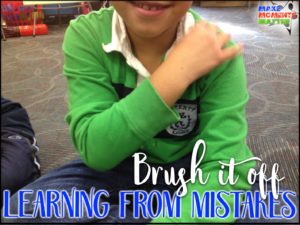 I start teaching this trick by asking kids what would happen if they were in P.E. running laps and they fell down. I ask, “Would you lay there and cry and not get up?” and they say “No!” “Would you walk out the door and never run again?” “No way!” I ask them how they would react when they fell and they say they’d get up and try again. Then I ask them to identify the process: “What’s the first thing you would do?” We work through that they would get up, brush off the dirt from falling, and try it again. And if they fall again, they’d do the same thing: get up, brush off, try again. I show them that when they make a mistake in music that I want them to do the same thing. Figure out that they did it wrong, make the action of brushing off their shoulder, and then try again. This is a visual cue for them and for me. They love the act of brushing off their shoulder because it gives them something tangible. They identify that they did it wrong and are going to try again. I see that they’ve noticed their error and that they’re going to self-correct. The little action, “brush it off,” feels fun and weird at first but can be applied to anything.
I start teaching this trick by asking kids what would happen if they were in P.E. running laps and they fell down. I ask, “Would you lay there and cry and not get up?” and they say “No!” “Would you walk out the door and never run again?” “No way!” I ask them how they would react when they fell and they say they’d get up and try again. Then I ask them to identify the process: “What’s the first thing you would do?” We work through that they would get up, brush off the dirt from falling, and try it again. And if they fall again, they’d do the same thing: get up, brush off, try again. I show them that when they make a mistake in music that I want them to do the same thing. Figure out that they did it wrong, make the action of brushing off their shoulder, and then try again. This is a visual cue for them and for me. They love the act of brushing off their shoulder because it gives them something tangible. They identify that they did it wrong and are going to try again. I see that they’ve noticed their error and that they’re going to self-correct. The little action, “brush it off,” feels fun and weird at first but can be applied to anything.
Reinforce that it’s Okay to Make Mistakes
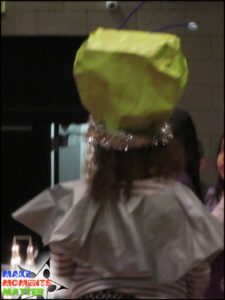 Two of my classroom rules are that each person must “Keep Moving Forward” and everyone needs to “Make Moments Matter” Even if you have a problem and make a mistake you need to keep trying. Don’t let that error stop you from doing a great job. This year at a grade-level concert one of my students had a wardrobe malfunction (the alien hat she was wearing fell off on stage while she was saying her lines). I LOVE showing this video to kids because the little girl who was speaking giggles a little, picks up the hat, and accidentally puts it on backwards. She realizes that she’s done something wrong again by putting it on the wrong way and turns it around. THEN she finishes her lines. I love showing this to kids because I stop and ask them questions about it. “Now, when her hat fell off did she run off crying? She could have, it would have been pretty scary, right? When she put it on the wrong way, did she leave it? Nope, she realized how it was wrong and fixed it. Did she get too scared to say the rest of the lines? No way. She kept moving forward, and didn’t let that problem stop her. She finished the lines and did a great job!”
Two of my classroom rules are that each person must “Keep Moving Forward” and everyone needs to “Make Moments Matter” Even if you have a problem and make a mistake you need to keep trying. Don’t let that error stop you from doing a great job. This year at a grade-level concert one of my students had a wardrobe malfunction (the alien hat she was wearing fell off on stage while she was saying her lines). I LOVE showing this video to kids because the little girl who was speaking giggles a little, picks up the hat, and accidentally puts it on backwards. She realizes that she’s done something wrong again by putting it on the wrong way and turns it around. THEN she finishes her lines. I love showing this to kids because I stop and ask them questions about it. “Now, when her hat fell off did she run off crying? She could have, it would have been pretty scary, right? When she put it on the wrong way, did she leave it? Nope, she realized how it was wrong and fixed it. Did she get too scared to say the rest of the lines? No way. She kept moving forward, and didn’t let that problem stop her. She finished the lines and did a great job!”
The clincher from the story is that after I show the video I reveal to them that this little girl was a stand-in. The kid who was supposed to have that line didn’t show up on the night of the concert and this girl put on the costume and said his lines even though she’d never said that part before or even worn the costume. When I tell kids this they get really impressed and have a very different impression about her performance. She’d never said the lines, worn the costume, or been in front of people before. She didn’t get a chance to practice it, so it makes sense that the hat would fall off. She’d not tried it before. Then I ask, “Since she was doing this for the first time, do you think that she made her moment matter? Did she try her hardest and do a great job?” They are then super proud of how she did. Her mistake makes sense because she’d not even tried the costume on before. She went through the process and did good work.
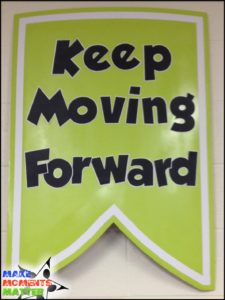 Taking a moment like that mistake and talking through it and showing how the little girl redeemed her moment helps kids realize what’s important. It shows them that if you just keep moving forward even through your mistakes that great things will happen. This was the one moment of the year that EVERYONE was watching, kids and parents, and this third grader did an amazing job even through her error. Any time a kid makes a mistake in your room, identifies, and fixes it you can applaud, award, and cheer them on. When kids realize that you’re happy they made the mistake and fixed it, they’ll feel more safe the next time they make a mistake. They won’t try and hide the mistake but will instead be okay with it, and go on.
Taking a moment like that mistake and talking through it and showing how the little girl redeemed her moment helps kids realize what’s important. It shows them that if you just keep moving forward even through your mistakes that great things will happen. This was the one moment of the year that EVERYONE was watching, kids and parents, and this third grader did an amazing job even through her error. Any time a kid makes a mistake in your room, identifies, and fixes it you can applaud, award, and cheer them on. When kids realize that you’re happy they made the mistake and fixed it, they’ll feel more safe the next time they make a mistake. They won’t try and hide the mistake but will instead be okay with it, and go on.

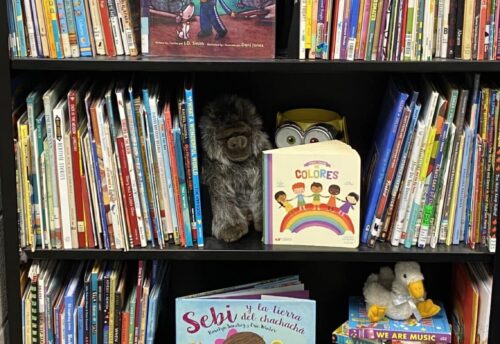
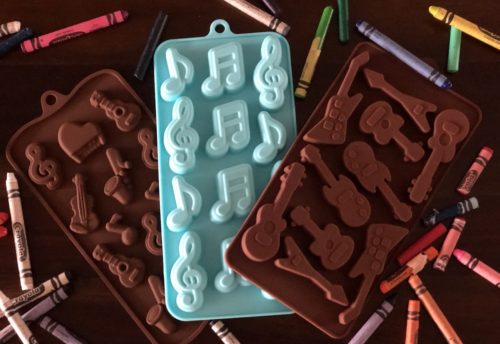

Leave a Reply